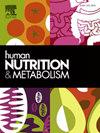2型糖尿病住院患者营养风险筛查工具的研究进展
IF 1.8
Q3 ENDOCRINOLOGY & METABOLISM
引用次数: 0
摘要
目的随着全球人口老龄化趋势的加剧和生活方式的改变,2型糖尿病(T2DM)的患病率持续上升,已成为全球性的重大公共卫生问题。营养不良是影响T2DM住院患者临床结局、生活质量和身体功能的独立危险因素,营养风险是营养不良的潜在前驱状态。对住院T2DM患者进行早期营养风险筛查和评估对于及时启动适当的营养支持至关重要。通过准确识别患者的营养风险和营养状况,预测其临床发展轨迹,明确营养管理和治疗的积极影响。目前,针对住院T2DM患者的营养风险筛查和评估工具多种多样,但各有优缺点和适用范围。因此,本文对T2DM住院患者常用的营养风险筛查评估工具进行综述,比较不同工具的筛查评估内容、优缺点及适用范围,以期为患者的早期防治和实施个性化、规范化的营养管理途径提供参考。本文章由计算机程序翻译,如有差异,请以英文原文为准。
Advances in nutritional risk screening tools for hospitalized patients with type 2 diabetes mellitus
Object
With the intensification of the global aging population trend and changes in lifestyle, the prevalence of type 2 diabetes mellitus (T2DM) continues to rise, and it has become a major global public health problem. Malnutrition is an independent risk factor that affects the clinical outcomes, quality of life, and physical functions of inpatients with T2DM, and nutritional risk is the potential precursor state of malnutrition. Early nutritional risk screening and assessment for inpatients with T2DM is crucial for the timely initiation of adequate nutritional support. Through the precise identification of the nutritional risk and nutritional status of patients, their clinical development trajectory can be predicted, and the positive impact of nutritional management and treatment can be clarified. Currently, there are various nutritional risk screening and assessment tools for inpatients with T2DM, but each has its own advantages, disadvantages, and scope of application. Therefore, this article reviews the commonly used nutritional risk screening and assessment tools for inpatients with T2DM, compares the screening and assessment contents, advantages and disadvantages, and scope of application of different tools, in order to provide references for the early prevention and treatment of patients and the implementation of individualized and standardized nutritional management pathways.
求助全文
通过发布文献求助,成功后即可免费获取论文全文。
去求助
来源期刊

Human Nutrition and Metabolism
Agricultural and Biological Sciences-Food Science
CiteScore
1.50
自引率
0.00%
发文量
30
审稿时长
188 days
 求助内容:
求助内容: 应助结果提醒方式:
应助结果提醒方式:


